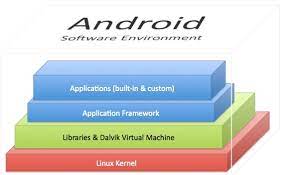The Dalvik Virtual Machine (DVM) was the original virtual machine used in early versions of the Android operating system. It was specifically designed to run Android applications and execute the bytecode generated from the Java programming language.
Here are some key points about the Dalvik Virtual Machine:
- Execution Environment: The DVM was optimized for resource-constrained mobile devices, such as smartphones and tablets. It was designed to run multiple instances of the virtual machine concurrently, with each application running in its own sandboxed environment.
- Register-based Architecture: Unlike the stack-based architecture of the Java Virtual Machine (JVM), the DVM used a register-based architecture. This approach allowed for efficient execution of bytecode and reduced memory usage.
- Dalvik Executable (DEX) Format: The DVM executed bytecode in the form of Dalvik Executable (DEX) files. DEX files are optimized for efficient storage and loading on mobile devices. They are generated from Java bytecode (.class files) during the build process using the “dx” tool.
- Just-In-Time (JIT) Compilation: The DVM initially used a just-in-time (JIT) compilation approach, where bytecode was dynamically compiled into native machine code at runtime for improved performance. This compilation process helped optimize the execution speed of Android applications.
- Transition to ART: With the release of Android 5.0 Lollipop, the Dalvik Virtual Machine was replaced by the Android Runtime (ART). ART introduced ahead-of-time (AOT) compilation, where bytecode is compiled into native machine code during the app installation process. This change improved overall performance and reduced runtime overhead.
It’s important to note that the DVM is no longer in active development, and devices running newer versions of Android utilize the ART runtime. The transition to ART brought significant performance improvements and better support for modern Android features and optimizations.
SHARE
